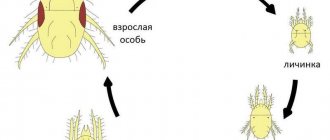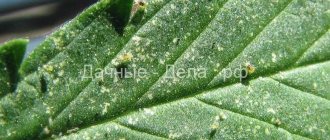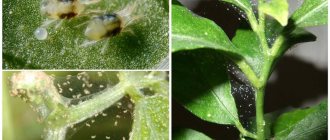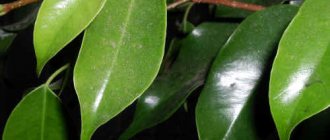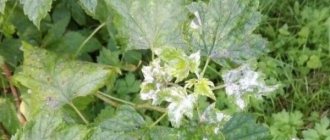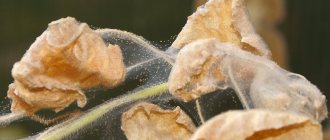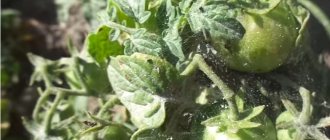Spider mites are small insects invisible to the eye; they feed on the juices of the plant and weave it with thin webs, along which they move very quickly. They have amazingly high fertility and can be a real challenge for the gardener. What to do if these small, but not at all remote pests suddenly settled on the site?
Spider mites love to settle on apple trees, but they can also move to other fruit and berry crops. Their omnivorous nature easily turns a small pest into a gardener's nightmare. The dominance of spider mites quickly reduces the immunity of a crop and makes it vulnerable to secondary infections of various origins. How to overcome an insect? Let's look at this issue in more detail.
What is a spider mite?
Spider mites are one of the dangerous pests, tiny in size, but causing damage to many types of plants by sucking the juice from the leaves. It is not so easy to detect it at the initial stage of infection, but you can recognize it by knowing what it looks like and what traces it leaves.
It harms trees, flowers, garden crops, indoor plants and those crops that grow in greenhouses.
Traces of the pest's activity can be seen on the leaves; thin cobwebs and light dots and puncture sites appear on the upper side; small red parasites can be seen on the lower side.
Spider mites on plants.
Appearance and structure of the parasite
The mite belongs to the arachnid family, the female is slightly larger than the male, the body is ellipsoidal, convex on top, flat on the bottom. The length of the female is 0.4-0.5 mm, the male is 0.3-0.4 mm. The larvae are small, transparent, light green or brown in color with two large dark spots on the sides. Females are orange-red or red, adult parasites have 4 pairs of legs, and larvae have 3 pairs.
Life cycle
Life cycle.
The female lays eggs, from which faces appear after 3 days. After several molts, having gone through two stages of nymphs, they turn into adults.
Under favorable conditions, from the appearance of larvae to imago takes from 5 to 20 days. Females live 2-4 weeks and during this time they are able to lay hundreds of eggs. During the season, 4-5 generations of ticks appear. For the winter, females hide in the upper layers of the soil or in cracks in the trunks and live there until spring.
Mites develop especially quickly in dry and hot weather and on plants overfed with nitrogen fertilizers.
Where can I meet
Pests can be found everywhere where there is any vegetation. Spider mites live in all regions except Antarctica.
Fighting methods
All methods of combating spider mites can be divided into 4 main groups:
- chemical;
- agrotechnical;
- biological;
- folk
Let's look at each group in more detail.
To increase the overall resistance of trees, it is necessary to carry out regular root and foliar feeding with complex fertilizers.
Agrotechnical techniques
Agricultural methods mostly relate to preventive measures, but they can help eliminate mites in combination with other methods and speed up the tree’s healing process.
- To reduce the number of mites and eggs overwintering in the soil, gardeners and agricultural technicians recommend plowing the tree trunk in autumn and spring. In autumn, it is necessary to remove and burn leaf and fruit litter to reduce the number of wintering sites for insects.
- Sanitary pruning should be carried out regularly, removing weak, damaged or thickening branches. Removed shoots must also be burned to prevent spider mites from spreading throughout the area.
- It is necessary to monitor the condition of the bark, treat all cracks and frost holes, since they can easily become entry points for the pest. You should not be lazy in removing loose bark from skeletal branches, as mites can overwinter under it.
Biological methods
Biological control methods include the use of biologically active drugs, as well as the reproduction of spider mites in the area of natural enemies.
One of the most popular biological preparations is Fitoverm. This is an extract from the waste products of some fungi, which, due to their properties, exhibit a toxic effect on adult spider mites. "Fitoverm" is active at temperatures from +18 degrees. In addition, it does not decompose at temperatures above +25 degrees, unlike most chemicals. The disadvantage of the product is that it does not act on insect eggs and larvae, therefore it requires regular repetition of treatment - at least 2 times per season. The danger of “Fitoverm” lies in its toxic effect on aquatic organisms and fish, therefore, if there is an open body of water near the site, the drug should be used with extreme caution. When working with it, it is necessary to remove pets and children from the area, and carry out the treatment with gloves and a protective mask.
To prevent ticks from developing resistance to the drug, it must be alternated with other groups, such as acaricides.
The natural enemy of the spider mite is the phytoseiidae, a small arthropod that can destroy about a hundred individuals per day. It is bred artificially and planted on affected trees.
Traditional methods: methods without chemicals
Supporters of traditional methods and opponents of chemicals should remember that this group of measures in case of tick infestation is ineffective due to the high rate of reproduction of the pest.
Treatments must be carried out frequently and regularly according to the insect's life cycle. Most popular recipes:
- Spraying with garlic solution. The working mixture is prepared from 50 g of cleaned heads, filled with 10 liters of water. The product is infused for 24 hours in a dark place, then 2 tablespoons of liquid laundry soap are added until completely dissolved and the crown is treated with the resulting composition once every 7-10 days.
- Sulfur-tar soap. Dilute 100 g of grated tar soap in 10 liters of water until completely dissolved and spray the crown once a week until the insects are completely exterminated.
- Onion infusion is prepared from 200 g of fresh onion peels, infused in 10 liters of water for an hour. After this, the solution is filtered and the crown is sprayed with it once a week.
- Horseradish root infusion. 400 g of fresh chopped root is poured into 10 liters of water and left in a dark place for 2–4 hours. The resulting infusion is sprayed onto the crown every 7–10 days.
- Black henbane infusion should be used with extreme caution. To do this, 1 kg of fresh henbane is poured with water and boiled over low heat for 5–6 hours. Then the broth is diluted with water in a ratio of 1: 1 and the trees are treated with it.
Signs of spider mites appearing on an apple tree
At the initial stage of infection of an apple tree with spider mites, it is not so easy to detect. The larvae of this parasite are very small, and light yellow dots, puncture sites, remain on the top of the leaves. Over time, the spots on the leaves become wider, and a thin cobweb appears on them, they dry out and fall off. Ticks are very prolific and there are more and more of them over time. It is important to detect parasites in time and begin to fight them.
Types of mites on plants.
Prevention
The appearance of spider mites often results in loss of harvest, reduced immunity of trees before the winter season, damage to garden crops by bacterial, viral and fungal infections, and sometimes leads to the death of the plant.
Preventive measures to combat spider mites on apple trees are considered agricultural techniques. Helps:
- autumn plowing;
- destruction of weeds, in which tick eggs often remain;
- pruning damaged branches;
- cleansing skeletal branches of lagging bark under which the pest overwinters;
- increasing the resistance of trees by applying foliar fertilizers.
In the event of a massive pest attack, damaged shoots are cut off and burned.
Technology for treating trees against pests
For preventive purposes, or when ticks appear, the garden is treated from spring to autumn. Correct and timely spraying will lead to good results. For each time, appropriate chemicals are selected.
- When treating trees with chemicals, it is important to take precautions. Use personal protective equipment, avoid contact with skin and eyes of toxic agents.
- Spraying should be carried out in dry, windless weather.
- Spray the product from the bottom up, since mites are located mainly on the lower part of the leaves.
- Treatments should be carried out in the morning or evening.
- Children and animals are strictly prohibited from being in the garden while working.
- After treatment, wash your face and hands with soap.
Treatment with folk remedies
The use of drugs prepared according to folk recipes allows you to get a positive result only with a slight spread of pests.
The most effective folk remedies are:
- Garlic infusion (170 grams of garlic cloves are poured into 1 liter of water and infused for 5 days).
- Tincture of dandelion roots (to prepare the composition, 30 grams of roots are soaked in 1 liter of cold water).
- Decoction of citrus fruits (100 grams of citrus peels are poured with water, boiled and infused for three days).
- Onion tincture (15 grams of pulp is poured into 1 liter of water and left for 7 hours).
Advantages of folk remedies:
- availability;
- ease of preparation and use;
- environmental cleanliness.
When to treat
It is important to observe the timing of tree processing; the amount of harvest and the resistance of crops to pest attack depend on them.
Before flowering
The first treatment after winter is carried out before the buds open, during which overwintered mites and other pests die. As soon as the temperature rises to +5 degrees and above, the trees and the soil around them are treated with copper or iron sulfate.
The second treatment is done after the leaves bloom, but before flowering. Use any insecticides or acaricides available to gardeners.
After flowering
Trees can be sprayed with chemicals only after fruit has set. For treatment, choose other insecticides or acaricides that have not yet been used in the current season. If you spray several times in a row with the same product, the ticks will get used to it.
During fruiting
Treatments should be stopped a month before harvesting the fruits. But as a last resort, in the event of a massive pest invasion, if treatment is required, use preparations that quickly decompose and do not remain on the fruit.
After harvest
After harvesting, but before the leaves fall, they are treated with copper sulfate, urea or any insecticides. Ticks remaining for the winter die.
How often should trees be treated?
During the growing season, trees are treated in the spring, before the leaves appear, after the leaves bloom, after the ovaries form, after harvesting.
But in extreme cases, when trees are damaged by pests, treatments are carried out more often, because the mite is capable of producing 4-5 generations in a season and causing great harm.
You can use two control methods simultaneously for greater effectiveness.
Processing times in different climate zones
Treatments of trees in the garden in different climatic zones are carried out taking into account weather conditions. In the southern regions of the country, work in the garden begins early; in cooler regions, the dates are shifted. You need to focus on the onset of warm weather in spring and the blossoming of leaves, flowering and harvesting of fruits.
Ticks on an apple tree.
Description of varieties
There are many varieties in the spider mite family. Most of them are too small, so they can only be recognized with a magnifying glass.
Fruit red
The fruit red species measures up to 0.4 mm and has an oval-shaped red body.
A large population appears as a single spot with a yellowish tint along the leaf vein.
Fruit brown
The brown fruit variety has a flat body up to 0.6 mm long, colored brown. Prefers to settle on the kidneys.
Its presence is recognized by the remains of silvery larval skins after molting, which accumulate on the bark of trees.
Gallic
The gall species prefers a secretive lifestyle, hiding inside twisted foliage and buds. Its size is up to 0.25 mm, its shape is elongated, oval, tapering towards the rear base, its color is white.
On the foliage, the population forms galls - yellow or brown spherical swellings, which is where it gets its name.
Kidney
Pests can destroy all buds
The bud type is considered the most dangerous, because it prefers to settle inside the buds on young shoots, robbing them of the chance to develop further.
Its length is no more than 0.2 mm. The shape of the body is round, elongated, worm-shaped. The color is white or with a yellowish tint.
As a result of its presence, large, deformed, diseased buds appear on the apple tree.
Schlechtendahl tick
The tick-borne variety of Schlechtendahl is less common. The length of the pest is up to 0.2 mm, the color of the body is yellowish with brown.
It is characterized by increased fertility: females are capable of laying up to 2 million eggs during their life cycle.
Due to the active feeding of these pests, photosynthesis processes in the foliage are disrupted and they fall off.
Preventive measures
Preventative treatments in the garden give good results, many diseases and pests are destroyed, and the resistance of apple trees increases. Work in the garden begins in spring and continues until late autumn. Prevention measures include:
- spring tree pruning and spraying;
- feeding;
- treatment before and after flowering;
- cleaning leaves and trimming damaged branches;
- cleaning the trunk and whitewashing;
- autumn cleaning and digging of the trunk circle.
Treatment
How to get rid of spider mites. You can choose a method depending on the measures that are more suitable for you, and based on the scale of tick reproduction. Among the methods of insect control, there are preparations for spider mites:
- treating apple trees with tobacco solution at home;
- spraying diluted field chamomile on the trunk and leaves;
- In case of significant reproduction, I use chemicals against ticks.
Prevention is an effective measure against parasites. But, if the symptoms of the pest are already visible, start treatment. When measures are taken against spider mites, they leave the plant in a timely manner without affecting the abundance of the harvest. The apple tree is treated with diluted tobacco dust twice. The same frequency is characteristic of a solution of dried and aged chamomile.
Chemicals are used in advanced situations and more actively. They are diluted based on the recommended dosages. Solutions are sprayed onto the entire plant. Chemical treatment methods are the most effective, but not all gardeners like to put them into practice at home. In the autumn, experienced gardeners recommend removing branches infected with eggs and burning them along with fallen leaves.
Pest control measures are effective against larvae and adults; mite eggs cannot be removed in this way. The eggs of the parasite are transmitted, including through soil, during transplantation. Therefore, it is necessary to cultivate the soil at home where the apple tree is planted.
Preventing the pest from appearing on your trees is ensured by regularly inspecting the tree. But it is impossible to completely eliminate its appearance. Prevention is not effective, since the eggs of the parasite are spread in strong winds both on the fur of animals and by humans themselves.
Before planting a purchased seedling, check the soil for the presence of a parasite. When pruning branches and clearing the crown, check for signs of parasite infestation. Only mindfulness as prevention can bring results.
Regular and timely watering can discourage spiders from laying eggs on your tree. An effective means of removing spiders is ultraviolet rays directed at the plant. Alcohol solution is a powerful remedy against the harmful spider. To do this, all leaves are treated with a solution. Do not dilute alcohol with water, this will damage the leaves. Garden plants in solution are used as pest control agents:
- dandelion;
- black henbane;
- gray alder;
- chamomile;
- tobacco
- horseradish;
- cyclamen.
Pests do not like these plants and leave the treated tree. Therefore, they can be classified as prophylactic agents that prevent the laying of eggs. Laundry soap is a weapon against pests. Soap is added to herbal solutions or diluted with soap and water.
Some gardeners use potassium permanganate as a measure against ticks and their eggs, but the action is ineffective. It is better to wrap the plant with a film into which air will not penetrate, after placing a cotton swab treated with dichlorvos there. The main thing is not to damage the leaves during processing.
It is important to treat all leaves. Including undamaged ones, spider eggs can concentrate on them
On an overly infected trunk, it is recommended to remove infected leaves. It is impossible to see the eggs on them, so prune the apple tree regularly.
Apple tree varieties resistant to spider mites
Apple tree varieties that are completely resistant to mite damage have not yet been developed by breeders. Some varieties have good immunity and are less susceptible to attack by pests. But the sustainability of crops can be increased if good care is provided: timely preventive treatments, fertilizing, watering, pruning and winter protection.
Previous
MitesRed mite on orchids: how to protect indoor flowers from the most dangerous pest
Next
MitesRed mites on indoor plants: how to protect your favorite flowers from the pest
What harm does
The main harm from spider mites is the disruption of photosynthesis processes in the foliage due to tissue damage, as well as the weakening of the trees' resistance to viral, bacterial and fungal infections due to the lack of plant juices for adequate nutrition.
As a result of the active development of tick colonies:
- young apple trees stop developing;
- mature weakened trees become susceptible to infections;
- gardeners lose their harvest and face the complete destruction of their garden crops.
Apple moth
This pest is widespread, and the most reliable protection against it is timely treatment of the fruit tree. If you forget about it, voracious caterpillars can ruin most of the harvest.
Apple moth caterpillar nest
The moth is a small white butterfly. Settling on an apple tree, she lays a mass of eggs in secluded places (near the buds, in places where branches branch). The caterpillars overwinter under the egg shells, and with the arrival of spring they crawl out and begin to eat first the buds, then the foliage.
As a result, the leaves begin to dry out and the branches become covered with cobwebs. Each such web can contain up to 70 caterpillars, which subsequently form pupae. In June, butterflies emerge from them.
Fighting methods
If a web is found, it must be collected manually from all those parts of the tree that can be reached.
Caterpillars are combated by spraying foliage and branches with solutions: special preparations (Entobacterin, Dendrobacillin) or a home-made tobacco infusion.
In the first months of spring, the scutes are cut off and burned. During the period of bud break, even before the formation of buds, the apple tree is sprayed with a solution. It is prepared like this: one of the preparations is dissolved in a bucket of water: 4 ml of Fitoverm, 10 ml of Kemifos, 2 ml of Decis or 10 ml of Kinmiks.
If the insects have become too numerous, use a solution consisting of a bucket of water and 10 ml of fufanon.
How to save apple plantings
To cope with parasites, it is worth treating the tree in a timely manner. It is recommended to do this several times.
What to spray
Special chemicals help fight parasites that cause cobwebs to appear on the apple tree.
Bitoxibacillin
This drug has a wide range of applications. It allows you to cope with aphids, hawthorn, and silkworms. The product can also be used against leaf rollers, ticks, and moths.
To achieve good results, you need to take 40-80 grams of the product and mix it with a bucket of water. For 10 square meters use 1 liter of product. Treatments are carried out at intervals of 1 week.
Dendrobacillin
This product is a bioinsecticide. It is produced in the form of a dry pink-gray powder. The product does not harm people or animals. With its help, it is possible to cope with moths, caterpillars, and silkworms. The drug also destroys moths and leaf rollers.
To achieve good results, pour 30-50 grams of powder into a bucket of water. Use 0.5 grams of product per 1 square meter. The substance can be used even during flowering. In this case, you should spray the tree no more than 2 times, maintaining an interval of 1 week.
Entobacterin
To treat an apple tree, take 10 grams of the product and mix it with 1 liter of water. To combat aphids, 5 grams is enough. The substance copes with moths, silkworms and other parasites.
The drug contains spores of Cereus bacteria. The product helps eliminate 97% of parasites and does not harm beneficial insects. The effect of the substance lasts for 1.5 weeks. Gradually his effectiveness decreases. A maximum of 2 treatments are allowed during the season.
If the indicator drops to +14 degrees and rainy weather occurs, it is better not to use the product.
Verticillin
The product helps to cope with aphids, whiteflies, and mites. The basis of the drug is the spores of the fungus Verticillium lecanii. They enter the body of the parasite, infecting it. It is recommended to water the tree well before using the product. Before use, the substance should be immersed in water for a day. This will help stimulate spore growth.
Bicol
This product successfully copes with ticks, aphids, and moths. It also helps eliminate codling moth and American white moth.
The product is used during the growing season. A total of 2 treatments are recommended, 1 week apart. 700 grams of the drug are used per 1 hectare. It is effective against 80 types of parasites.
The best biological drugs
The use of biological agents should be carried out in dry and warm weather
It is important to strictly follow the instructions on the packaging. To prevent the development of allergies, it is worth using protective equipment
Mechanical and agrotechnical techniques
Mechanical methods of pest control include the following:
- use of birdhouses - birds help cope with harmful insects;
- the use of traps - they contain pheromones that attract male pests;
- use of catch belts.
Agrotechnical measures are aimed at destroying weeds, loosening the tree trunk, and whitewashing. If necessary, the crop can be treated with garden varnish.
Folk remedies
You should choose homemade recipes depending on the type of parasite. The simplest method of killing parasites is the use of a strong jet of water. It helps wash away insects from the tree. They should then be collected and destroyed.
You can also treat wood with the following compounds:
- Mix 200 grams of wood ash, 5-6 tablespoons of laundry soap and 5 liters of water. Spray the tree with the prepared mixture.
- Take a 1 liter jar and fill it with onion peels. Pour boiling water to the top and leave to steep for a day. Then it is recommended to strain the product and add 1 liter of cold water.
- Take 2-3 onions, chop and add 1 liter of water. Leave for 1-2 days and strain.
- Add 1 liter of water to 100 grams of dandelion leaves. Leave for 2-3 hours and strain.
- Take 1 kilogram of nettle, add 5 liters of warm water and leave for several hours. Strain.
- Add 2-3 liters of boiling water to 800 grams of dried yarrow and leave for half an hour. Then pour in another 2-3 liters of warm water and leave for 1 day.
